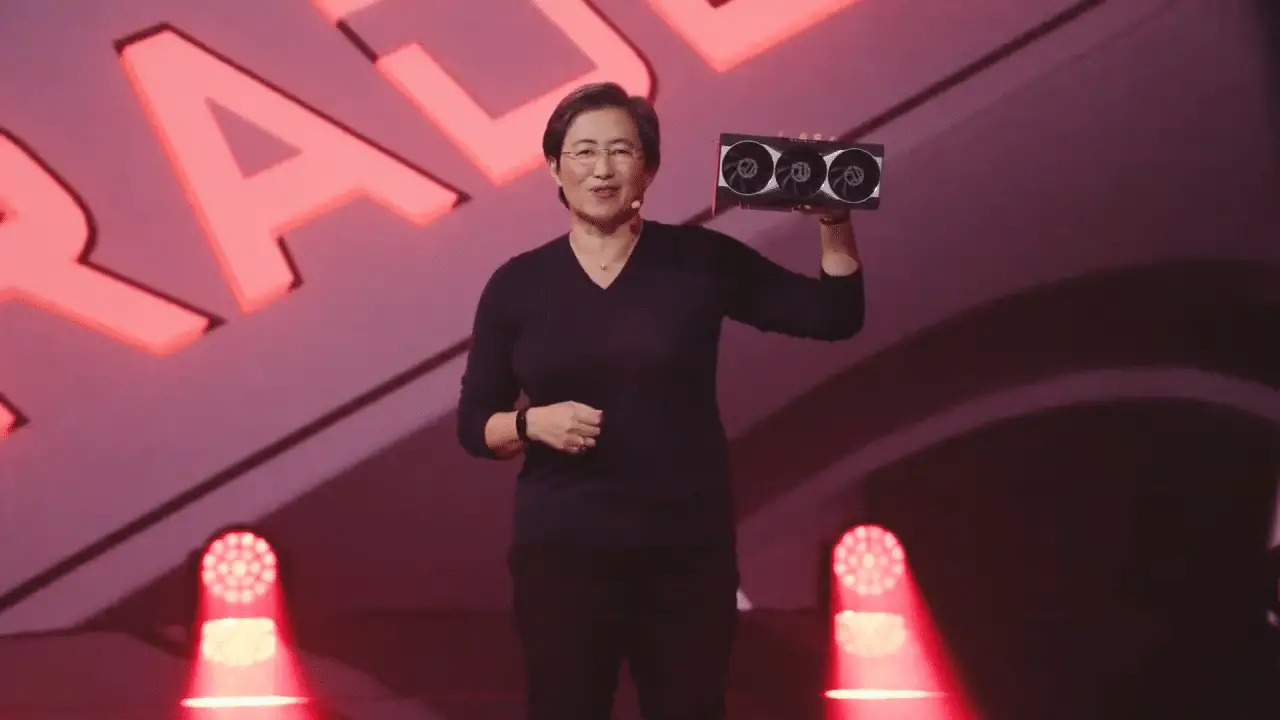AMD is just over a week away from the big unveiling of the Radeon RX 6000 series, where the RDNA 2 architecture is the basis for the performance cards in the “Big Navi” family, among other things. Leaked information about the capacity of the graphics cards continues to find its way onto the web to the last, and the latest report comes from the diligent technology leaker Patrick Schur on Twitter.
Ships 21 XT
16GB GDDR6
255W TGP
~2.4 GHz (Game Clock)– Patrick Schur (@patrickschur_) October 17, 2020
The information concerns the graphics circuit Navi 21 XT, which is said to be the intermediate circuit in the “Big Navi” array. The report confirms previous information on how much graphics memory the graphics cards are equipped with, which is set to 16 GB GDDR6. The new information is that the Navi 21 XT reaches a clock frequency of 2.4 GHz in typical game scenarios, something that is achieved with a total power consumption (TGP) of 255 watts.
Characteristics | Ships 21 XT | Navi 21 XTX | Ships 21 XL | Geforce RTX 3070 (GA104) |
|---|---|---|---|---|
Circuit surface | Unknown | 505 mm²* | Unknown | 393 mm² |
Calculation units | Unknown | 80 CU * | Unknown | 46 SM |
Streamprocessorer | Unknown | 5 120* | Unknown | 5 888 |
Bass frequency graphics processor | 2,3 GHz* | Unknown | Unknown | 1,5 GHz |
Memory | 16 GB GDDR6* | 16 GB GDDR6* | Unknown | 8 GB GDDR6 |
Memory bus | 256 bits * | 256 bits * | 256 bits * | 256 bits |
Architecture | RDNA 2 | RDNA 2 | RDNA 2 | Ampere |
* Speculative specifications based on leaked data.
According to data from Videocardz, reference models of the Navi 21 XT reach clock frequencies of 2.3 GHz, but that variants of the graphics circuit from partner manufacturers also reach 2.4 GHz. The simpler sibling Navi 21 XL is instead said to settle at the level of 2.1 GHz, and information about the most powerful circuit Navi 21 XTX is missing. Navi 21 XTX corresponds to the aforementioned “Big Navi” circuit which according to reports is equipped with 5,120 stream processors and 80 computing units (CU).
Other tasks that have been frequently reported in previous leaks include support for a new cache function called Infinity Cache, which will allow graphics cards to handle more calculations on the graphics circuit without having to communicate with the graphics memory. It should reduce the load on the memory bandwidth, which should be relatively narrow with a reported 256-bit memory bus. A narrower memory bus reduces energy consumption, which should be desirable in otherwise complex graphics circuits.
If the data turns out to be correct, the Radeon RX 6000 series and RDNA 2 seem to have good potential, as clock frequencies around 2.4 GHz with total energy consumption around 255 watts stand up well to Nvidia’s Ampere lineup. Entered the performance segment, the Geforce RTX 3070, reaches a turbo frequency of 1.73 GHz at a TGP level of 220 watts. The big sibling Geforce RTX 3080 instead reaches a turbo frequency of 1.71 GHz at 320 watts TGP.
In connection with the unveiling of the processors in the Ryzen 5000 “Vermeer” series at the beginning of the month, AMD took the opportunity to entice with performance data about the Radeon RX 6000 in 4K UHD. According to the information, the cards have what it takes to run the games Borderlands 3, Call of Duty: Modern Warfare and Gears of War 5 in 4K UHD with image updating ranging from 61 FPS up to 88 FPS.
How closely these data match reality will be determined on October 28, 2020, when AMD will unveil the graphics cards in the Radeon RX 6000 series.















